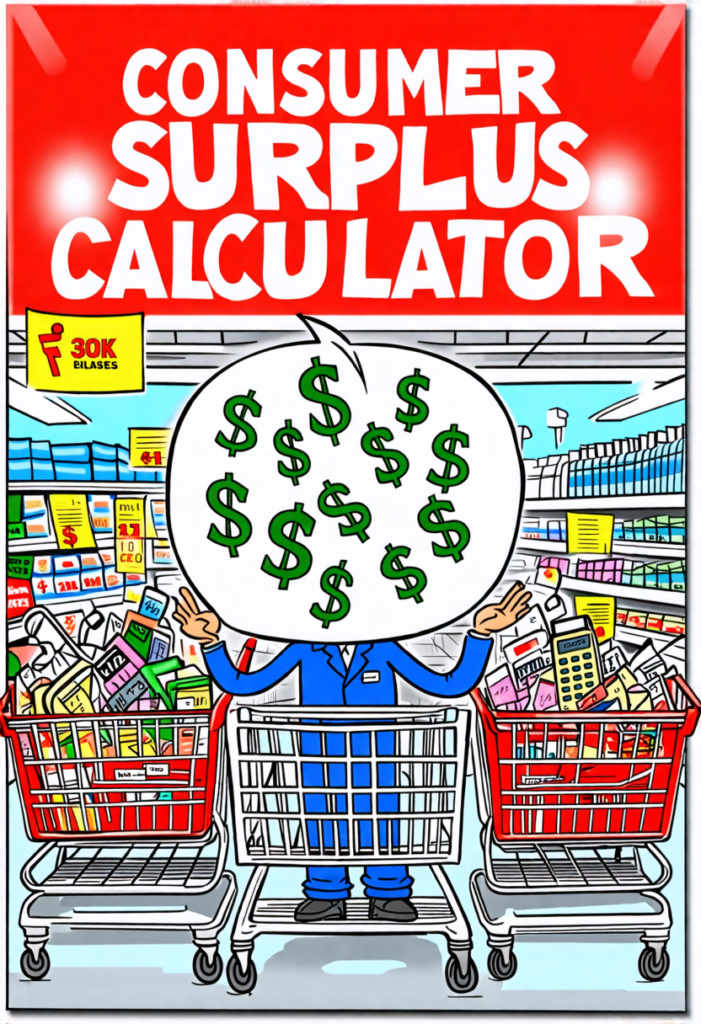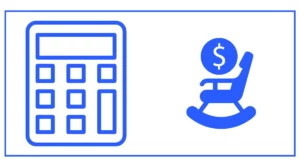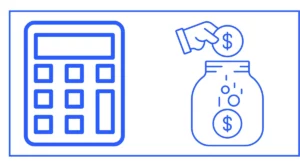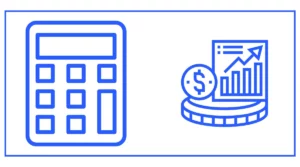Consumer Surplus Calculator
The consumer surplus calculator helps you calculate the consumer and extended consumer surplus.
Enter the actual price, willing price, equilibrium price, and equilibrium quantity to find the surplus and extended consumer surplus price.
In case you don’t know, consumer surplus measures market competition’s consumer benefits.
A consumer surplus occurs when a product or service costs less than customers are willing to pay.
It measures the additional advantage consumers gain by paying less than they were willing to spend.
Consumer surplus = (½) x Qd x ΔP
Qd = Supply and demand balance.
ΔP = Pmax – Pd, or the price at equilibrium where supply and demand are equal.
Pmax = The highest price a person is willing to pay.
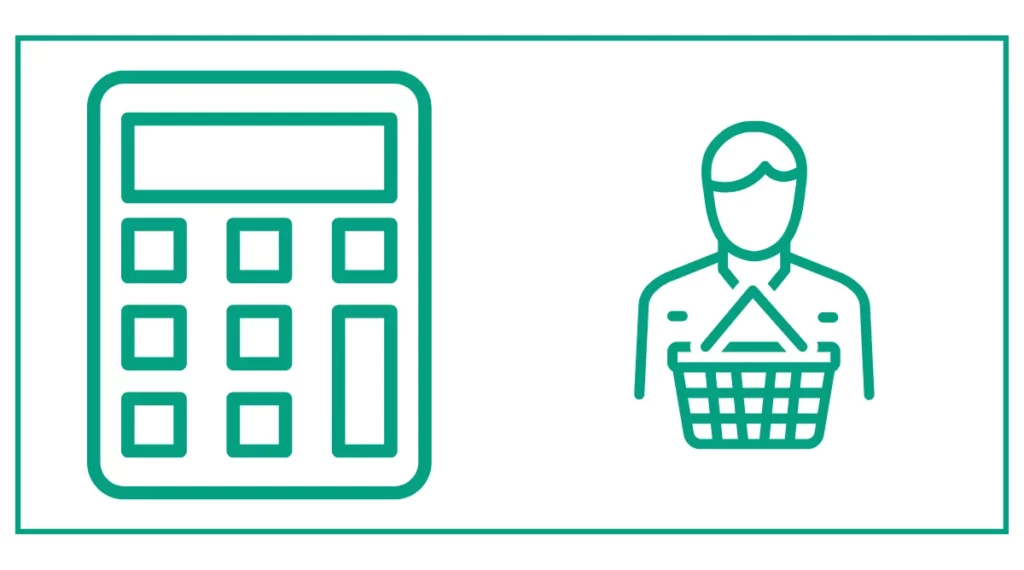
You might want to determine OSHA incident rate or Net operating income.
In the world of economics, consumer surplus is a crucial concept that helps us understand the benefits consumers derive from market transactions. This guide will explore the ins and outs of consumer surplus, provide a step-by-step explanation of how to calculate it, and introduce you to our consumer surplus calculator.
What is Consumer Surplus?
Consumer surplus is defined as the difference between the maximum price a consumer would be willing to pay for a good or service and the actual price they pay in the market. It represents the economic benefit or value that consumers receive when they purchase a product for less than the highest price they would have been willing to pay.
For example, let’s assume a consumer is willing to pay $50 for a new book, but the market price is only $30. In this case, the consumer surplus would be $20 ($50 – $30). This $20 represents the additional satisfaction or value the consumer gains from the transaction.
The Importance of Consumer Surplus in Economics
Understanding consumer surplus is essential for several reasons:
- It provides insights into consumer behavior and preferences.
- It helps businesses make pricing decisions.
- It contributes to the evaluation of market efficiency.
- It plays a role in policy-making decisions related to taxation and regulation.
Consumer surplus is closely related to other economic concepts such as producer surplus and total surplus, which we’ll explore later in this guide.
How to Calculate Consumer Surplus
Calculating consumer surplus involves a few key steps:
- Determine the maximum price a consumer is willing to pay for a good or service.
- Identify the actual market price of the good or service.
- Subtract the actual price from the maximum price the consumer is willing to pay.
The formula for consumer surplus can be expressed as:
Consumer Surplus = Maximum Willing Price minus Actual Price
For a more comprehensive analysis involving multiple consumers or units of a good, we use the demand curve to calculate the total consumer surplus in a market.
Using the Demand Curve to Calculate Consumer Surplus
In economics, the demand curve illustrates the relationship between the price of a good and the quantity demanded by consumers. The area between the demand curve and the equilibrium price represents the total consumer surplus in a market.
To calculate consumer surplus using the demand curve:
- Identify the equilibrium price and quantity in the market.
- Determine the highest point on the demand curve (where the quantity demanded is zero).
- Calculate the area of the triangle formed by these points.
The formula for this calculation is:
Consumer Surplus = 1/2 * (Maximum Price minus Equilibrium Price) * Equilibrium Quantity
This method provides a more comprehensive view of consumer surplus across an entire market.
Introducing Our Consumer Surplus Calculator
To simplify the process of calculating consumer surplus, we’ve developed a user-friendly consumer surplus calculator. This tool allows you to quickly determine both individual consumer surplus and market-wide consumer surplus.
Here’s how to use our consumer surplus calculator:
- Enter the actual price of the good or service.
- Input the maximum price you (or consumers) would be willing to pay.
- For market-wide calculations, enter the equilibrium price and quantity.
- Click the “Calculate” button to see the results.
Our calculator provides both individual consumer surplus and extended consumer surplus (market-wide) results, giving you a comprehensive view of the economic benefit to consumers.
Consumer Surplus vs. Producer Surplus
While consumer surplus focuses on the benefits to buyers, producer surplus represents the benefit to sellers in a market transaction. Producer surplus is the difference between the price a producer receives for selling a good and the minimum price they would have been willing to accept.
Understanding both consumer and producer surplus is crucial for grasping the concept of total economic surplus, which is the sum of consumer and producer surplus. This total surplus represents the overall economic benefit generated by market transactions.
Applications of Consumer Surplus in Real-World Scenarios
Consumer surplus has numerous practical applications in economics and business.
- Pricing Strategies: Businesses can use consumer surplus to optimize their pricing strategies, aiming to capture more of the surplus as revenue.
- Policy Evaluation: Governments can assess the impact of policies on consumer welfare by analyzing changes in consumer surplus.
- Market Analysis: Economists use consumer surplus to evaluate market efficiency and the distribution of economic benefits.
- Product Development: Understanding consumer surplus can guide companies in developing products that create more value for consumers.
- Competitive Analysis: Firms can use consumer surplus to assess their competitive position and identify opportunities to increase market share.
Factors Affecting Consumer Surplus
Several factors can influence the amount of consumer surplus in a market, including:
- Price Elasticity of Demand: More elastic demand typically results in lower consumer surplus, as consumers are more sensitive to price changes.
- Market Structure: Competitive markets often lead to higher consumer surplus compared to monopolistic markets.
- Product Differentiation: Unique or highly valued products may generate more consumer surplus.
- Income Levels: Changes in consumer income can affect willingness to pay and, consequently, consumer surplus.
- Substitutes and Complements: The availability of substitute goods or complementary products can impact consumer surplus.
Limitations and Criticisms of Consumer Surplus
While consumer surplus is a valuable concept in economics, it’s important to be aware of its limitations:
- Subjectivity: Determining a consumer’s maximum willingness to pay can be subjective and difficult to measure accurately.
- Assumptions: The concept assumes rational consumer behavior, which may not always reflect real-world decision-making.
- Dynamic Markets: Consumer surplus calculations often rely on static analysis, which may not capture the dynamic nature of markets.
- Income Effects: The concept doesn’t always account for how changes in income might affect consumer preferences and willingness to pay.
- Non-monetary Factors: Consumer surplus typically focuses on monetary value, potentially overlooking other factors that influence consumer satisfaction.
Advanced Topics in Consumer Surplus
For those interested in delving deeper into the subject, there are several advanced topics related to consumer surplus:
- Marginal Utility: The concept of marginal utility underlies consumer surplus, explaining why consumers’ willingness to pay decreases as they consume more of a good.
- Consumer Surplus and Welfare Economics: Consumer surplus plays a crucial role in welfare economics, helping economists assess the overall well-being of society.
- Consumer Surplus in International Trade: Analyzing consumer surplus in the context of international trade can provide insights into the benefits of free trade agreements.
- Dynamic Consumer Surplus: This advanced concept considers how consumer surplus changes over time due to factors like technological advancements or changing consumer preferences.
- Consumer Surplus in Two-Sided Markets: Platforms that connect two distinct user groups (e.g., social media platforms) require a more complex analysis of consumer surplus.
